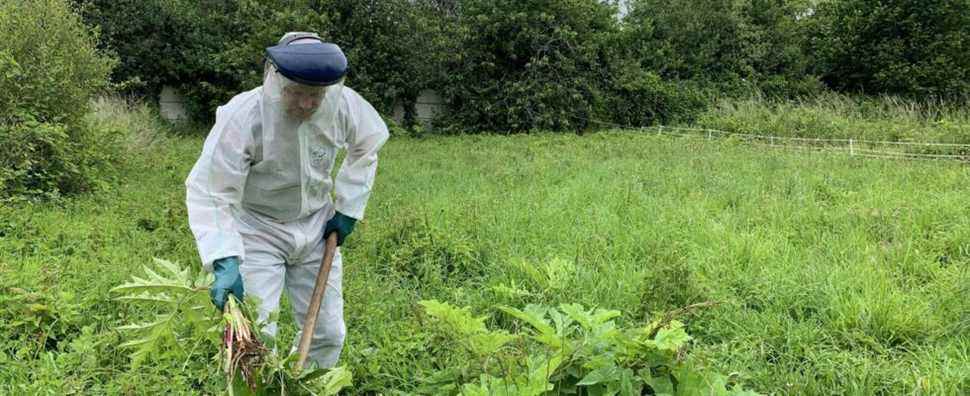They invade our waterways and affect their biodiversity. The invasive aquatic plants are more and more numerous: more than 1,300 exotic species have been identified in France. To the point that the State Secretariat for Biodiversity plans to create regional intervention brigades, on the model of what already exists in Normandy. Jean-François Dufaux is the coordinator of this very first Normandy intervention brigade on invasive species, made up of almost ten people, and financed by Europe, the State and the Conservatoire des Espaces Naturels.
This brigade was created above all “for biodiversity reasons”but not only, explains Jean-Francois Dufaux: “For sanitary reasons, because plants that can be very allergenic or can cause very serious burns, such as giant hogweed. And also for economic reasons, because you can have a reduction in agricultural yield on certain plots by the presence of Japanese knotweed, for example, which will reduce the quality of a wheat field that would be harvested.
Ten species are of concern in Normandy. Among others, gigantic hogweed, which can cause third-degree burns, or Helms’ crassula, which is partially resistant to glyphosate. Uprooting these plants is therefore painstaking work.
“We will pass the same place several times to control the development and ensure that there is efficiency in our work. For example, you are going to uproot a thousand plants of giant hogweed, then you come back a month later to uproot a hundred , then the next month more than ten.”
Jean-Francois Dufauxat franceinfo
An operation that the brigade will repeat “at least three or four years in the sector concerned.” These plants come from New Zealand, Brazil or the Caucasus, some have been brought in by container, so by trade and have sometimes been there for decades. But they have been boosted by climate change and will definitely be part of the landscape. “Often, unfortunately, we are mainly there to limit the spread of the speciesdeplores Jean-Francois Dufaux. But eradicating a species is a bit illusory in certain territories, when there are really too many.” To try to spot these invasive plants, the brigade trains auxiliaries, in particular by involving hunters and fishermen.
